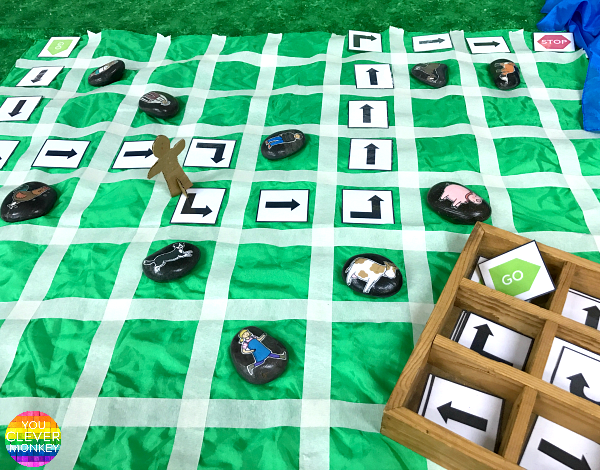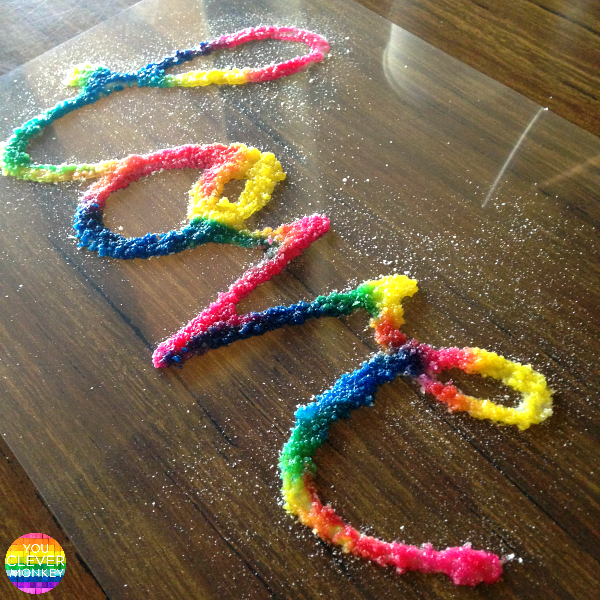Why we need to help build children's short term memory and some simple ways how to improve their working memory.
I recently went to a training session that pointed out that many of us are not using our short term memory as much as we once did and I agreed.
We don't send our children down to the shop to get the few things we need for dinner anymore.
We don't have to remember how to spell as most devices have auto-predict and auto-correct.
We don't have to remember phone numbers, birthdays or appointments
We have apps for all that now but is it helping us? Or are we losing what we are no longer using?
We know that executive brain function is tied closely to being able to read and write well. So there is great importance in improving our children's short term memory. We can help build the working memory of our children with some simple games.
This post contains affiliate links.
GAMES TO PLAY TO IMPROVE CHILDREN'S SHORT TERM MEMORY
WHAT'S MISSING?
Place a selection of items on the floor in front of the children. Have one or more children close their eyes while you remove an item or two. Ask them to recall what is missing. We played this version in class while learning about shapes.MEMORY GAMES
You can play a game of memory with just about anything. Colour cards, pictures, letters, numbers... the list goes on.Start with a small number of cards, matching pictures or colours work well for young children, and gradually increase the number of paired cards you are using. Place all the cards face down. To play turn two cards over at a time, match a pair and you get another shot. Play until all the pairs are matched.
MEMORY GAME IN A BOX
A couple of years ago I bought this wooden memory box from Discount School Supplies in the US. It's perfect for playing memory as well. I've used it lots of different ways.Here children were trying to match the object to the beginning sound as a literacy centre activity.
PLAY CARD GAMES
Many card games are an excellent way to improve the ability of children's short term memory.
Playing games like Go Fish, Sleeping Queens, Spot It and even UNO, children have to be able to remember the rules whilst also remembering which cards have already been played to be able to work out what cards are left and how to play the cards you have.
Some board games like Q-Bitz are designed specifically to build visual discrimination skills and executive function. There are also some great apps like AniMatch and Dyslexia Quest worth checking out too.
CATER TO MORE THAN ONE SENSE
Make your game play multisensory! Get up and moving by making patterns for your child to follow using your whole body. Clap, stomp, jump, hop. Many children find it easier to learn when moving.IMPROVE EXECUTIVE FUNCTION IN ENGLISH LESSONS
We know that short term memory is important to learning to read and write and many of the strategies we teach to build reading comprehension are also effective for building a child's short term memory.VISUALISING
Visualising is a fancy way of describing the pictures we see in our head when we are reminded of a memory.A sound - waves crashing on the beach taking you back to a family holiday.
A smell - wet dog shaking after a wash.
A taste - fresh watermelon reminding you of hot summer days.
A picture, a word, a song, can all trigger strong long term memories that we use to help us understand. We do it as we read and write to help us do both well. It helps us make connections to texts, between texts and to ourselves.
RETELLING A STORY
Providing story telling baskets for retelling is one of my favourite ways to improve a child's short term memory in the classroom.After sharing a book together I'll often make the book available with some puppets, story stones, animals, cards or other props to suit for children to be able to retell the shared story. For this, they need to call on their short term memory to be able to recall the storyline.
Being able to retell familiar stories also helped with our introduction to coding during our English lessons. We used retold the story of 'The Gingerbread Man' using our coding box with children having to move the Gingerbread Man safely pass all the characters in the story who were trying to eat him.
SEQUENCING
Used similarly to retelling, sequencing is perfect for younger children and usually included visual supports the children just have to differentiate between to work out the correct order.For younger children, it might be sequencing picture cards like their morning routine or drawing the correct sequence of a recipe or story.
For older children, it might be writing the sequence of events. What happened first, second, next, last?
There are some great printable book-based resources available. I love the free ones available at Early Learning HQ. These sequence cards for Rosie's Walk came from there but you just as easily create your own by photocopying pages from a reader to resequence in your guided reading lessons.
You can also play sequencing games or move to songs like 'Head, Shoulders, Knees, Toes' but change the order so a child needs to recall what is now 'Toes' in the song. It might be as simple as making 'toes' become 'head' to start with. Or you can try some partner games like those used by Play is the Way program.
BREAK IT INTO CHUNKS
In the same way we teach children to to break unfamiliar words into more recognisable chunks, take the same approach to improving memory function.
Some art and craft activities are perfect for building short term memory function this way - those that have multiple, sequential steps to complete the activity.
Some art and craft activities are perfect for building short term memory function this way - those that have multiple, sequential steps to complete the activity.
Salt painting is a perfect example of a multi-step activity preschools can attempt. You can find how easy and simple it is to do here.
REPEATING RHYMES
Repeating rhymes or song lines can help improve a child's working memory too. There's a reason why nursery rhymes have been sung to children all this time.TEACH OTHERS
Teaching others means thinking about what you know and then being able to memorise it in a different way to be able to present the information to others. It can be a useful way to extend the knowledge of an already capable student.If you have any other suggestions for improving short term memory, please leave a comment. I'd love to hear your ideas too.
LIKE IT? PIN IT!








